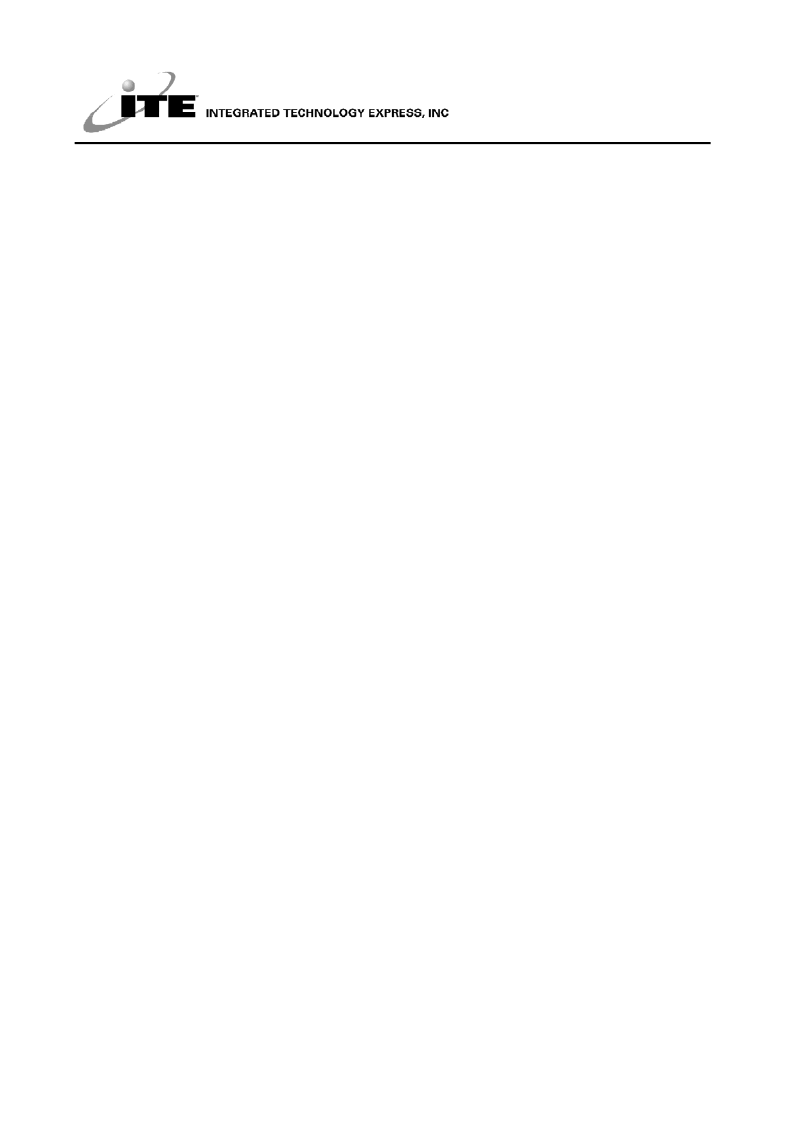- 您現(xiàn)在的位置:買賣IC網(wǎng) > PDF目錄383185 > IT8673F (Electronic Theatre Controls, Inc.) GT 35C 35#12 SKT PLUG PDF資料下載
參數(shù)資料
| 型號: | IT8673F |
| 廠商: | Electronic Theatre Controls, Inc. |
| 英文描述: | GT 35C 35#12 SKT PLUG |
| 中文描述: | 先進的輸入/輸出(高級I / O)的初步規(guī)范V0.5 |
| 文件頁數(shù): | 97/128頁 |
| 文件大小: | 780K |
| 代理商: | IT8673F |
第1頁第2頁第3頁第4頁第5頁第6頁第7頁第8頁第9頁第10頁第11頁第12頁第13頁第14頁第15頁第16頁第17頁第18頁第19頁第20頁第21頁第22頁第23頁第24頁第25頁第26頁第27頁第28頁第29頁第30頁第31頁第32頁第33頁第34頁第35頁第36頁第37頁第38頁第39頁第40頁第41頁第42頁第43頁第44頁第45頁第46頁第47頁第48頁第49頁第50頁第51頁第52頁第53頁第54頁第55頁第56頁第57頁第58頁第59頁第60頁第61頁第62頁第63頁第64頁第65頁第66頁第67頁第68頁第69頁第70頁第71頁第72頁第73頁第74頁第75頁第76頁第77頁第78頁第79頁第80頁第81頁第82頁第83頁第84頁第85頁第86頁第87頁第88頁第89頁第90頁第91頁第92頁第93頁第94頁第95頁第96頁當前第97頁第98頁第99頁第100頁第101頁第102頁第103頁第104頁第105頁第106頁第107頁第108頁第109頁第110頁第111頁第112頁第113頁第114頁第115頁第116頁第117頁第118頁第119頁第120頁第121頁第122頁第123頁第124頁第125頁第126頁第127頁第128頁

IT8673F
7
line is printed.
Bit 0 STB: Inverse of the STB# pin, this pin controls the data strobe signal to the printer.
(4) EPP Address Port (Primary Base Address + 03h)
The EPP Address Port is only available in the EPP mode. When the Host writes to this port, the contents of
D0 -D7 are buffered and output to PD0 - PD7. The leading edge of IOW causes an EPP ADDRESS WRITE
cycle. When the Host reads from this port, the contents of PD0 - PD7 are read. The leading edge of IOR
causes an EPP ADDRESS READ cycle.
(5) EPP Data Ports 0-3 (Primary Base Address + 04h - 07h)
The EPP Data Ports are only available in the EPP mode. When the Host writes to these ports, the contents
of D0 - D7 are buffered and output to PD0 - PD7. The leading edge of IOW causes an EPP DATA WRITE
cycles. When the Host reads from these ports, the contents of PD0 - PD7 are read. The leading edge of IOR
causes an EPP DATA READ cycle.
11.6.2 EPP Operation
When the parallel port of the IT8673F is selected to be in the EPP mode, the SPP mode is also available.
Address/Data Port address is decoded (Base address + 03h- 07h), the PD bus is in the SPP mode, and the
output signals such as STB#, AFD#, INIT#, and SLIN# are set by SPP control port. The direction of the data
port is controlled by the bit 5 of the control port register. A 10-msec time is required to prevent the system
from lockup. The time has elapsed from the beginning of the IOCHRDY high (EPP READ/WRITE cycle) to
WAIT# being deasserted. If a time-out occurs, the current EPP READ/WRITE cycle is aborted and a logic
"1" will be read in the bit 0 of the status port register. The Host must write 0 to bits 0, 1, 3 of the control port
register before any EPP READ/WRITE cycle (EPP spec.) The pins STB#, AFD# and SLIN# are controlled
by hardware for the hardware handshaking during EPP READ/WRITE cycle.
(1) EPP ADDRESS WRITE
1. The Host writes a byte to the EPP Address Port (Base address + 03h). The chip drives D0 - D7 onto PD0
- PD7.
2. The chip drives IOCHRDY low and asserts WRITE (STB#) and ASTB# (SLIN#) after IOW is active.
3. Peripheral deasserts WAIT#, indicating that the chip may begin the termination of this cycle. The chip
then deasserts ASTB#, latches the address from D0 - D7 to PD bus and releases IOCHRDY, allowing
the Host to complete the I/O WRITE cycle.
4. Peripheral asserts WAIT#, indicating that it acknowledges the termination of the cycle. The chip then
deasserts WRITE to terminate the cycle.
相關PDF資料 |
PDF描述 |
|---|---|
| IT8687R | GT 35C 35#12 SKT PLUG |
| ITC1000 | GT 85C 85#16 SKT PLUG |
| ITF86130SK8T | N-Channel, Logic Level, Power MOSFET(N溝道邏輯電平功率MOS場效應管) |
| ITF86182SK8T | 11A, 30V, 0.0115 Ohm, P-Channel, Logic Level, Power MOSFET |
| ITF87012SVT | 6A, 20V, 0.035 Ohm, N-Channel,2.5V Specified Power MOSFET(6A, 20V, 0.035Ω N溝道2.5V專用功率MOS場效應管) |
相關代理商/技術參數(shù) |
參數(shù)描述 |
|---|---|
| IT8687R | 制造商:ITE 功能描述: |
| IT86B | 制造商:未知廠家 制造商全稱:未知廠家 功能描述:TRIAC|600V V(DRM)|8A I(T)RMS|TO-220 |
| IT86C | 制造商:未知廠家 制造商全稱:未知廠家 功能描述:TRIAC|600V V(DRM)|8A I(T)RMS|TO-220 |
| IT86F | 制造商:未知廠家 制造商全稱:未知廠家 功能描述:TRIAC|600V V(DRM)|8A I(T)RMS|TO-220 |
| IT86G | 制造商:未知廠家 制造商全稱:未知廠家 功能描述:TRIAC|600V V(DRM)|8A I(T)RMS|TO-220 |
發(fā)布緊急采購,3分鐘左右您將得到回復。